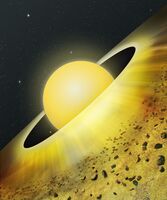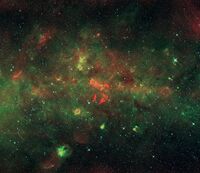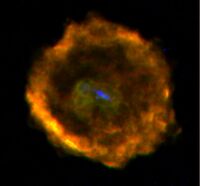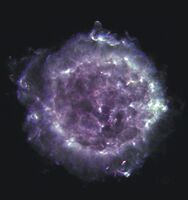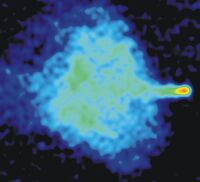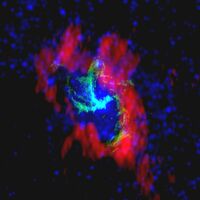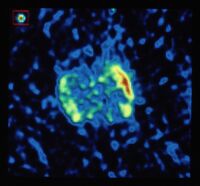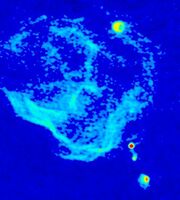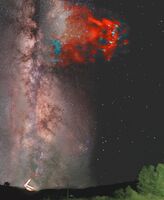Galactic Sources
Galactic radio sources, as their name implies, are objects within the Milky Way Galaxy that emit radiation that can be detected at radio wavelengths. These sources include relatively young objects: stars like our Sun; ionized hydrogen or HII regions, which often surround massive stars embedded in dense clouds; and warm dust heated by newly formed stars. Galactic radio emission also comes from the remnants of stars at or near the ends of their lives: planetary nebulae - expanding shells of debris from low-mass stars (so named because they resemble planets in small optical telescopes); supernovae & supernova remnants - clouds of gas and dust created when massive stars explode; pulsars, neutron stars & black holes - extremely dense stellar remnants formed after a supernova explosion.
Click on any sub-category name below to view all the images in that sub-category, or click any thumbnail to view the details of that image.

